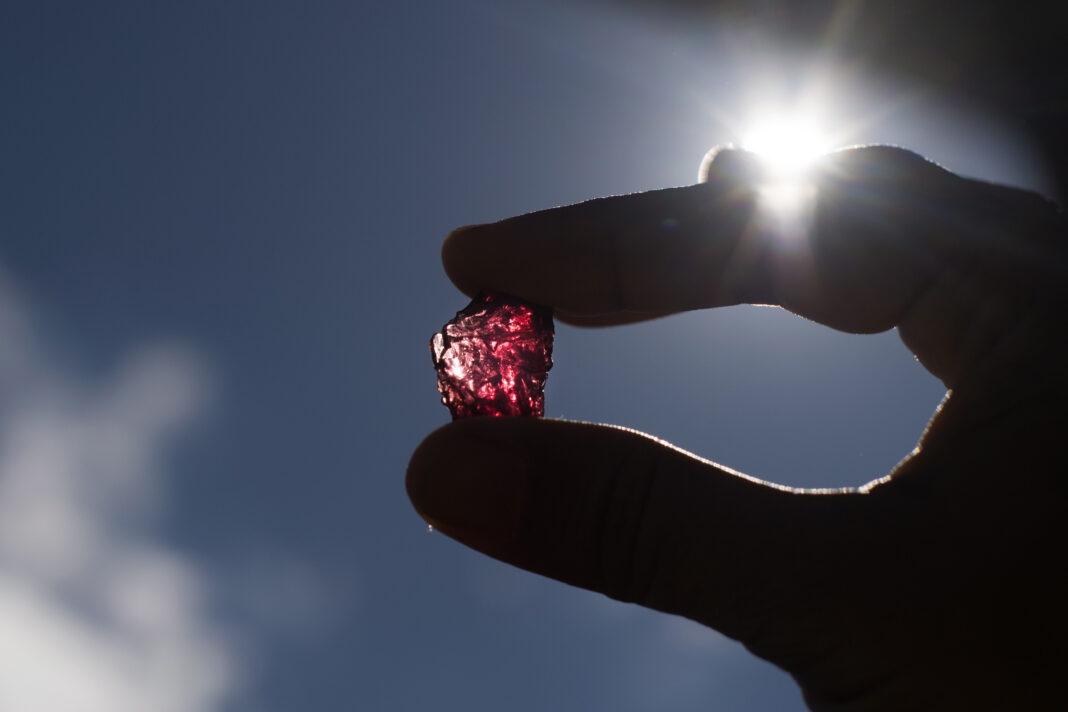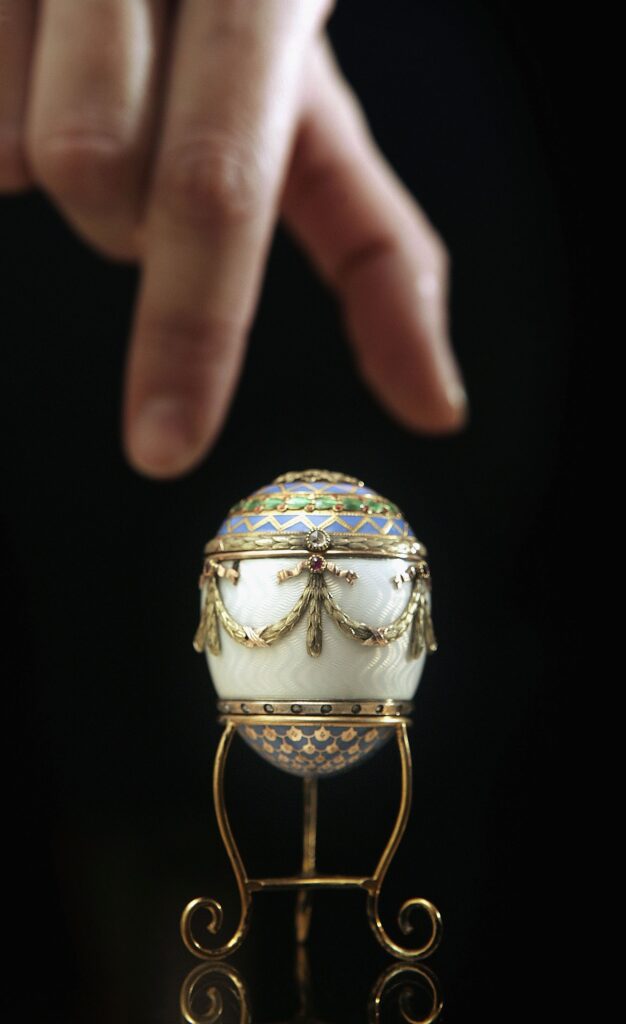
It’s tempting to link the recent woes of coloured gemstones miner Gemfields to the malaise in the diamond industry. After all, the ‘big three’ coloured gemstones – rubies, emeralds, sapphires – are often mentioned in the same breath as diamonds. All are rare, beautiful stones that are prized for their ability to sparkle under bright lights and convey wealth and status. But while they share space in jewellery store displays, the worlds of coloured gemstones and diamonds differ in some fundamental ways.
Gemstones, broadly, are minerals valued for their beauty and rarity, cut and polished for use in jewellery and decorative objects. The term ‘coloured gemstones’ refers to those other than diamonds and includes rubies, known for their rich red hue; emeralds, famed for their intense green; and sapphires, usually blue but available in an array of colours.
Gemfields, listed on both the Johannesburg Stock Exchange and AIM in London, operates two key assets: the Kagem emerald mine in Zambia – the world’s single largest producing emerald mine – and the Montepuez ruby mine in Mozambique, one of the largest-known ruby deposits.
The link between diamonds and coloured gemstones lies partly in geology and partly in commerce. Both are natural minerals formed under tremendous heat and pressure, but diamonds are pure carbon crystallised deep within the earth’s mantle, rising to the surface through volcanic kimberlite pipes. Rubies and emeralds, by contrast, form in metamorphic rocks closer to the earth’s crust. While diamonds are prized for colourlessness and clarity, coloured gemstones celebrate vibrant hues and inclusions that lend each stone its unique ‘fingerprint’.
In commercial terms, both diamonds and coloured gemstones have historically sat atop the luxury pyramid. Yet their markets are structured differently, and those differences have become starkly apparent amid the diamond industry’s current slump.
Two forces have battered the diamond market. First, global demand for natural diamonds has weakened, particularly in the US and China. Fears of recession, stubbornly high inflation and slowing consumer spending on luxury goods have weighed on jewellery sales. In China, a crucial growth market, diamond demand reportedly collapsed by as much as 50% in 2024, echoing the country’s broader economic slowdown and fragile consumer confidence.
Second, the rise of lab-grown diamonds (LGDs) has disrupted the natural diamond market. LGDs are chemically identical to natural diamonds but cost up to 80% less. In 2024, over half of US engagement rings reportedly featured lab-grown stones, a seismic shift driven by younger consumers seeking value and sustainability.

As LGDs flood the market, natural diamond prices have dropped sharply – by some estimates, down more than 25% since March 2022. That’s left inventories piled high, particularly in India, where 90% of the world’s diamonds are cut and polished. De Beers reported a $2bn stockpile of unsold stones in 2024, the largest since the 2008 financial crisis, and was forced to slash production by 20% to steady the market.
By comparison, the coloured gemstone market is far less transparent. It’s harder to quantify supply, demand or even price levels across the sector. Yet it’s probably fair to assume that poor global economic conditions have cooled enthusiasm for rubies and emeralds, too.
Even so, Gemfields maintains that the lab-grown threat affecting diamonds doesn’t apply in the same way to coloured stones.
“Diamonds and coloured gemstones are not as similar as is often thought: they differ in the way they are mined, traded, graded and regulated. Each sector has unique dynamics resulting from how they have evolved over the past centuries,” says Gemfields CEO Sean Gilbertson.
“Lab-grown coloured gemstones were successfully synthesised long before lab-grown diamonds. In the late 1800s, Auguste Verneuil created the first lab-grown ruby, which was followed shortly afterwards by the first lab-grown emerald, created by Carroll Chatham. Lab-grown diamonds, much more difficult to make, were introduced 50 years later by the American company, General Electric.”
Gilbertson says that while there’s been a longstanding interest in synthesising both gems and diamonds, the markets for lab-grown and natural gemstones have diverged because they serve fundamentally different purposes. “Today, lab-grown rubies are used in watchmaking as low-friction jewels in the mechanical movements of high-end watches.
“They are also utilised for lasers and other industrial purposes because they share similar properties with natural stones. Even when used in jewellery, synthetic emeralds and rubies are much cheaper alternatives and the entire piece of jewellery – metal, manufacturing, presentation – is typically lower-end.
Lab-grown coloured gemstones lack character, the unique geological fingerprints of Mother Nature. They’re too ‘perfect,’ without the natural imperfections and ‘inner worlds’ that natural gems possess. No scientist has ever succeeded in synthesising that.”
This distinction goes to the heart of value in coloured gemstones. “Diamonds thrive on perfection and the absence of colour or inclusions,” says Gilbertson. “Coloured gemstones possess unique charm precisely because of the subtleties in hue, tone, and saturation. A keen eye can often distinguish a synthetic emerald from a natural one, while this is much more challenging with diamonds.”
Unlike diamonds, where pricing is tightly linked to the ‘four Cs’ (cut, colour, clarity, carat), valuing a coloured gemstone is a far more subjective art. “To describe the colour of a ruby or an emerald on a sunny day versus a rainy day and then land on a fair value that others would agree upon would be nearly impossible,” says Gilbertson. “That’s because coloured gemstones are deeply nuanced. Their value lies in subtleties and even the emotion they evoke.” This lack of commoditisation has helped insulate natural-coloured gemstones from the same price erosion that has undercut natural diamonds.
FINANCIAL STRESS
Still, none of this has spared Gemfields from financial turbulence. The company has struggled through a perfect storm of its own, culminating in a $30m rights issue completed in June 2025. The causes of Gemfields’ woes have been far more company-specific than simply soft luxury demand.
Beyond the broader slowdown in global luxury sales, three simultaneous challenges have impacted the group’s balance sheet. First, the emerald market was thrown into disarray in the second half of 2024 when a rival Zambian emerald producer flooded the market with discounted stones. Three back-to-back auctions from the competitor, including one billed as “the largest emerald auction in history”, coincided awkwardly with Gemfields’ own sales.
Buyers, anticipating cheaper stones, held back bids. Revenues at Gemfields’ higher-quality emerald auction in November 2024 disappointed, and although a follow-up auction in February 2025 saw partial recovery, the damage was done. Gemfields has responded by pausing mining at Kagem, choosing instead to process stockpiles while waiting for market stability to return.

Second, Gemfields has been hit by a stark drop in premium ruby production from Montepuez. In 2024, the mine yielded only 40,006 carats of premium rubies, roughly half the average of the prior three years. Because a mere 5% of mined rubies typically account for 90% of auction revenues, this shortfall has had an outsized impact on income. There’s no obvious geological cause for the drop; management believes it’s simply a result of natural variability and expects production to rebound.
Meanwhile, Gemfields pins hope on its new second processing plant at Montepuez (PP2), scheduled to triple processing capacity to 600 tons an hour later in 2025. The facility should help unlock ruby stockpiles, bring new colour variations to market, and reduce dependence on specific high-value pockets.
Third, Mozambique’s political volatility flared up in late 2024, with civil unrest leading to a three-day mining halt at Montepuez and higher costs for supplies and fuel. While conditions have largely stabilised, insurgent activity and illegal mining remain threats.
These pressures forced Gemfields into its $30m rights issue. As outlined in its rights issue circular, the capital raise aimed to plug a near-term working capital shortfall exacerbated by weaker auction revenues and heavy investment in growth projects.
Chief among those projects is PP2, Gemfields’ biggest single investment to date, with an outlay near $70m. The rights issue was priced at significant discounts of 19.7% to the theoretical ex-rights price in the UK and 21.5% in South Africa. Assore International Holdings and Rational Expectations, significant shareholders, underwrote the deal and provided bridging loans totalling $13.4 million to keep Gemfields afloat while the rights issue was being completed.
Alongside the capital raise, Gemfields has been aggressively cutting costs. Non-essential spending and capital projects have been suspended, including work at certain ruby development assets in Mozambique and a gold project at Nairoto. Mining at Kagem was paused for six months to save cash.
The group is also exploring strategic options, including a potential sale, for Fabergé, its luxury jewellery brand acquired in 2013. Fabergé, with its heritage stretching back to the Russian imperial court, has been used to showcase Gemfields’ stones and promote the wider coloured gemstone market.
However, the process has been halted pending completion of the rights issue and might resume later in 2025.
Gemfields’ story shows that although diamonds and coloured gemstones often share the spotlight, their markets work in fundamentally different ways.
Lab-grown diamonds have taken significant market share from natural stones, but when it comes to rubies and emeralds, rarity and unique character still drive value. For Gemfields, the challenge now is to fix its operational issues and prove to investors that natural-coloured gemstones can still hold their premium in a shifting global market.




